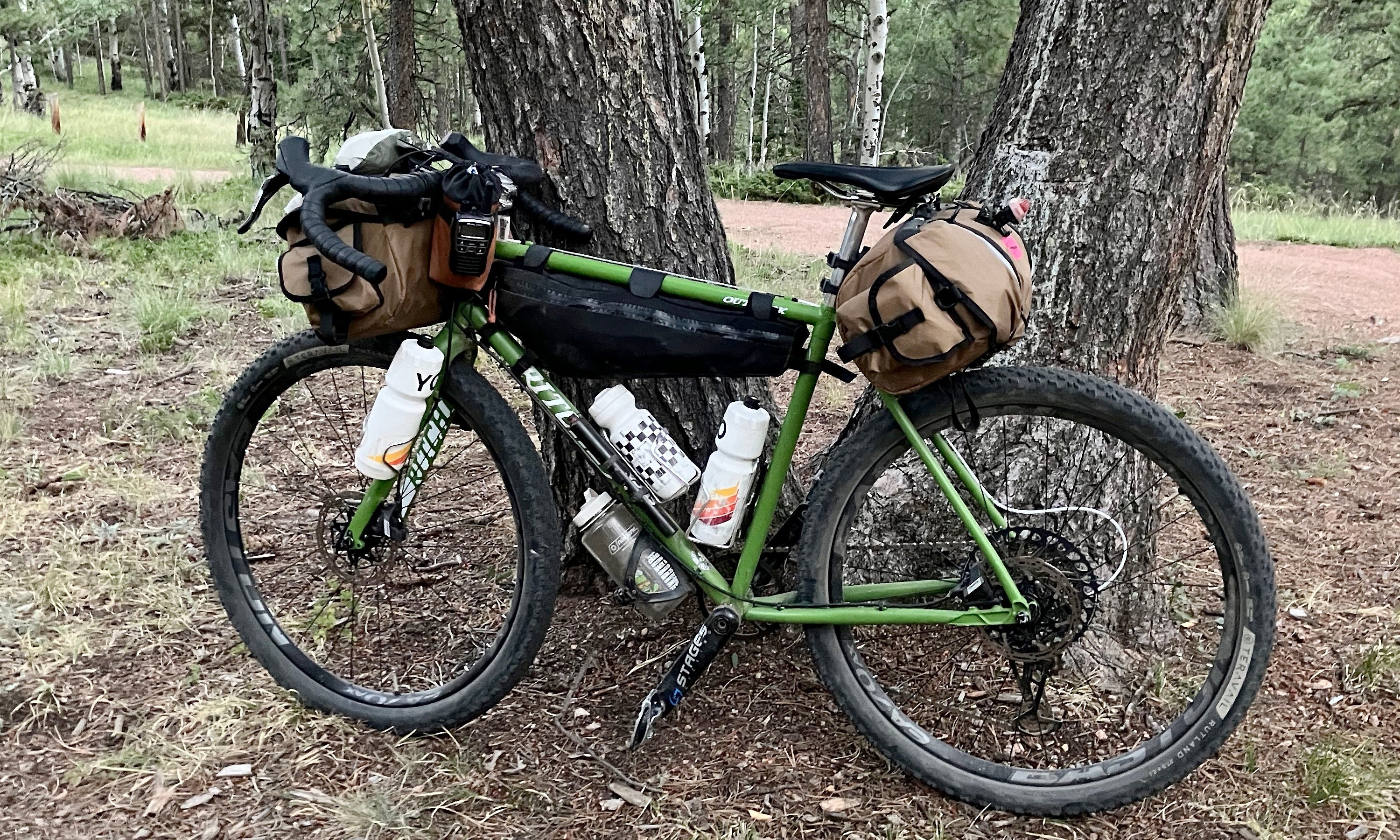Disc brake pads eventually wear out. Sometimes they get contaminated by oils or other fluids. When that happens, it’s time to replace them. Fortunately, changing brake pads on modern SRAM and Shimano hydraulic disc brakes is easy and it only requires a couple of common tools. The method described here will also work for a lot of hydraulic disc brakes from other brands too.
[button]Shop Brakes[/button] | [button]Shop Bikes[/button]
When to replace bike disc brake pads
Brake pad manufacturers will have a recommended minimum pad thickness for their pads. SRAM suggests replacing pads when the brake pad backing plate and pad material together measure less than 3mm thick in any section. Shimano suggests replacing brake pads when the pad material measures less than 0.5mm thick.
I prefer to replace brake pads when they look about 50% worn. This is easier than measuring, and once brake pads are about halfway worn, the brake lever throw will be much longer than when the pads are new. Though it is possible to use them until you reach the minimum pad thickness, it’s nice to replace pads earlier to keep your brakes feeling tight.
[newsletter]
How to replace bike disc brake pads
Before you get started, you’ll need to take the wheels off your bike to get full access to the brake calipers and pads. The easiest way to do this is in a repair stand, but if you don’t have one, that’s okay. There are other ways to support your bike (like turning it upside down) to remove the wheels so you can hopefully improvise something.
[product-block handle="feedback-sports-recreational-repair-stand"/]
Step 1: Remove your old pads
To remove your old pads, the first thing you need to do is remove the retaining pin. This pin goes through your brake pads and screws into the caliper body to hold the pads in place. It might have a small retaining pin clip on the end, which is there to provide a little extra security in case the pin comes loose.
 If there is a retaining pin clip, simply pluck it off with some needle nose pliers. Now you can then unscrew the pin.
If there is a retaining pin clip, simply pluck it off with some needle nose pliers. Now you can then unscrew the pin.
- SRAM retaining pins require a 2.5mm hex wrench
- Shimano retaining pins require a 3mm hex wrench or a small flathead screwdriver, depending on the model.
[product-block handle="bondhus-ball-end-l-hex-wrench-set-1"/]
 Once the retaining pin is removed, you can pull the old pads and the spring straight out of the top of the caliper.
Once the retaining pin is removed, you can pull the old pads and the spring straight out of the top of the caliper.
Step 2: Reset brake caliper pistons
 Before you install your new brake pads, you need to reset the pistons in the brake caliper. The pistons push the brake pad against the brake rotor. As brake pads wear and get thinner, the pistons will extend to compensate. Because new brake pads are thicker, you need to push the pistons back into the caliper to make room.
Before you install your new brake pads, you need to reset the pistons in the brake caliper. The pistons push the brake pad against the brake rotor. As brake pads wear and get thinner, the pistons will extend to compensate. Because new brake pads are thicker, you need to push the pistons back into the caliper to make room.
Pro tip: Use this same procedure for resetting pistons if you ever accidentally squeeze your brake lever with your wheels off.
Pro mechanics have specific tools made for pushing pistons back. The most common is the Park Tool PP-1.2 Hydraulic Brake Piston Press. But at home, my go-to is a basic plastic tire lever, which is something every cyclist should already have. Otherwise, you can use any tool that is soft, flat, and small enough to fit inside the brake caliper (a rubber-coated cone wrench handle, for example). I like plastic tire levers because you won’t scratch or damage anything in the caliper. Just make sure it’s clean.
[product-block handle="pedros-tire-lever-pair-yellow-1"/]
 Use your tool to apply pressure against the pistons to push them back until they’re flush with the inside of the caliper. You want to apply pressure as straight as possible, but you can also use the body of the caliper for some leverage if you need it.
Use your tool to apply pressure against the pistons to push them back until they’re flush with the inside of the caliper. You want to apply pressure as straight as possible, but you can also use the body of the caliper for some leverage if you need it.
Step 3: Install new brake pads
Once the pistons have been reset, you can install your new pads. Often, new brake pads come with a new spring and retaining clip, but if not, you’ll need to reuse the old spring and retaining clip.
 When you’re handling your new brake pads, do your best not to touch the actual pad material. You don’t want to risk contaminating the pads with the oils on your skin. Put the pads in the spring. Make sure everything is facing the right way around. Reference your other caliper if you need to. Then slide the pads into the caliper. Align the holes in the pads and caliper so you can install your retaining pin. Then push on the retaining pin clip if it has one.
When you’re handling your new brake pads, do your best not to touch the actual pad material. You don’t want to risk contaminating the pads with the oils on your skin. Put the pads in the spring. Make sure everything is facing the right way around. Reference your other caliper if you need to. Then slide the pads into the caliper. Align the holes in the pads and caliper so you can install your retaining pin. Then push on the retaining pin clip if it has one.
Once the pads are in, you can reinstall your wheel. Pump the brake lever until the pads contact the rotor. Then check the alignment by spinning the wheel. If there’s no brake rub, then you’re done! If there is, check out our post on how to fix disc brake rub.
[button]Shop Brakes[/button] | [button]Shop Bikes[/button]













